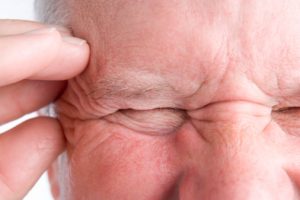
Cluster headaches can occur any time of the day but typically occur or worsen in the fall or spring months (during season changes). Cluster headaches can last for days or months, and then go into remission so a person doesn’t experience them for quite some time.
Cluster headaches affect one in every 1,000 people and occur in men more than women. A person who suffers from cluster headaches can experience them up to three times a day.
Cluster headache versus migraine headache
Migraine with aura refers to sensations experienced with the onset of a migraine, such as feeling less mentally alert, seeing flashing lights or unusual lines, tingling or numbness and unusual smells or tastes.
The difference between cluster headaches and migraines is vast, for example, cluster headaches occur numerous times a day, while a migraine headache is not a daily occurrence, and if it does occur, it is just once.
Both migraine and cluster headaches are mainly experienced on one side of the head; however, migraines can affect other sensations, which is something cluster headaches do not do.
Cluster headache causes
Unfortunately, if this is the cause of cluster headaches, researchers are still unaware as to why the hypothalamus acts in this way.
Risk factors of cluster headaches include:
- Being male
- Aging
- Smoking
- Being of African descent
- Alcohol consumption
- Genetics
Cluster headache symptoms
Symptoms of cluster headaches can come on quickly and without any warning. Symptoms of cluster headaches include:
- Restlessness
- Eye becomes watery and painful
- Slight swelling around the eye
- Stuffy, blocked or runny nose
- Pale skin on the face
- Pupils become smaller
- Eyelid may droop on the side where there is pain
Cluster headache treatment
There is no cure for cluster headaches, but treatments are available to prevent them or lessen their severity.
Some fast-acting treatments involve:
- Inhaling 100 percent oxygen – this is only effective if a person has an oxygen tank available to them
- Injectable sumatriptan – this can also be taken in nasal spray form and can be used for the treatment of migraines and cluster headaches
- Dihydroergotamine – pain reliever
- Octreotide
- Local anesthetic nasal drops
Preventative treatment of cluster headaches includes:
- Corticosteroids
- Ergotamine
- Anesthetic on the occipital nerve
- Calcium channel blockers
- Lithium carbonate
- Anti-seizure medications
Some lifestyle habits that can help minimize cluster headaches involve getting regular and proper sleep and minimizing consumption of alcohol as it can trigger cluster headaches during a headache period.